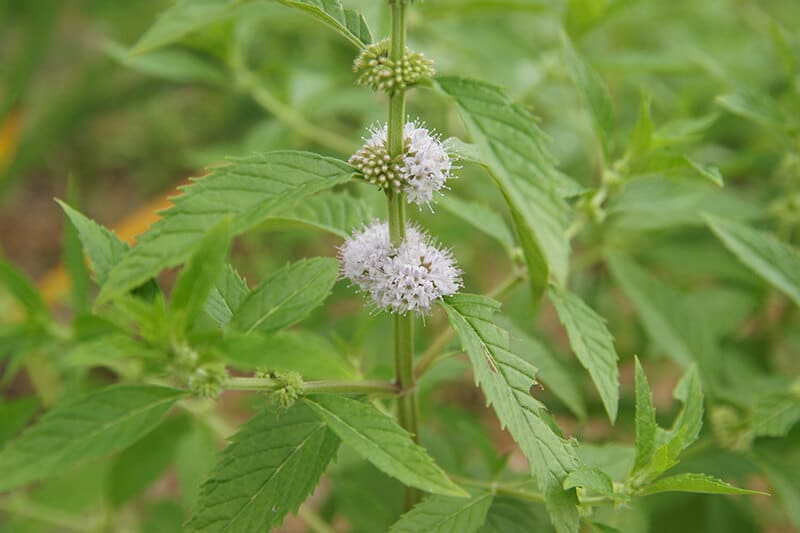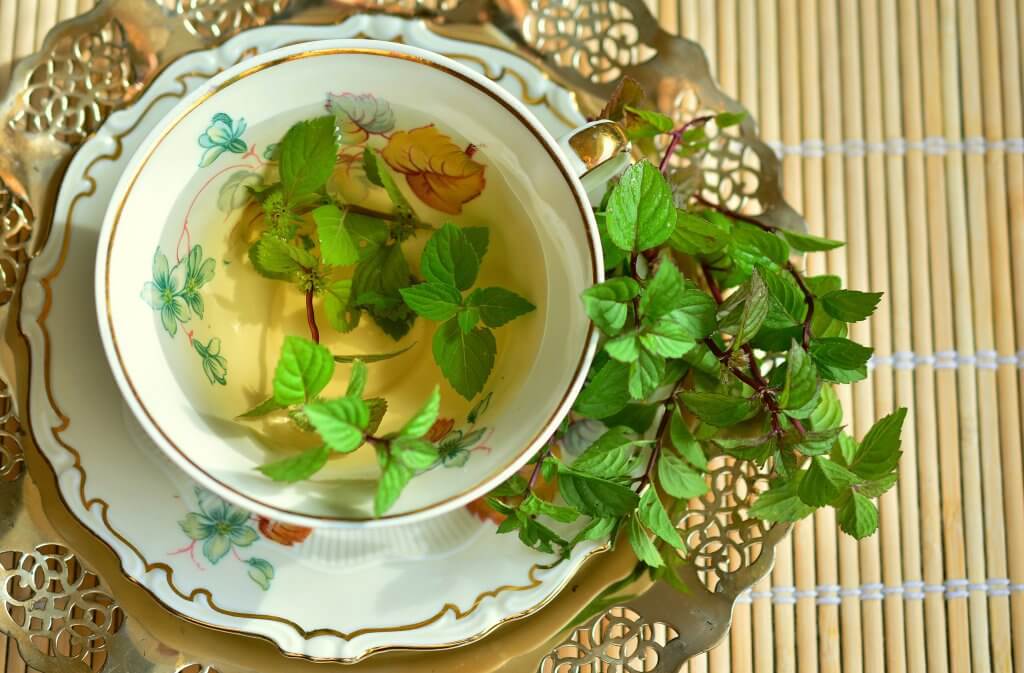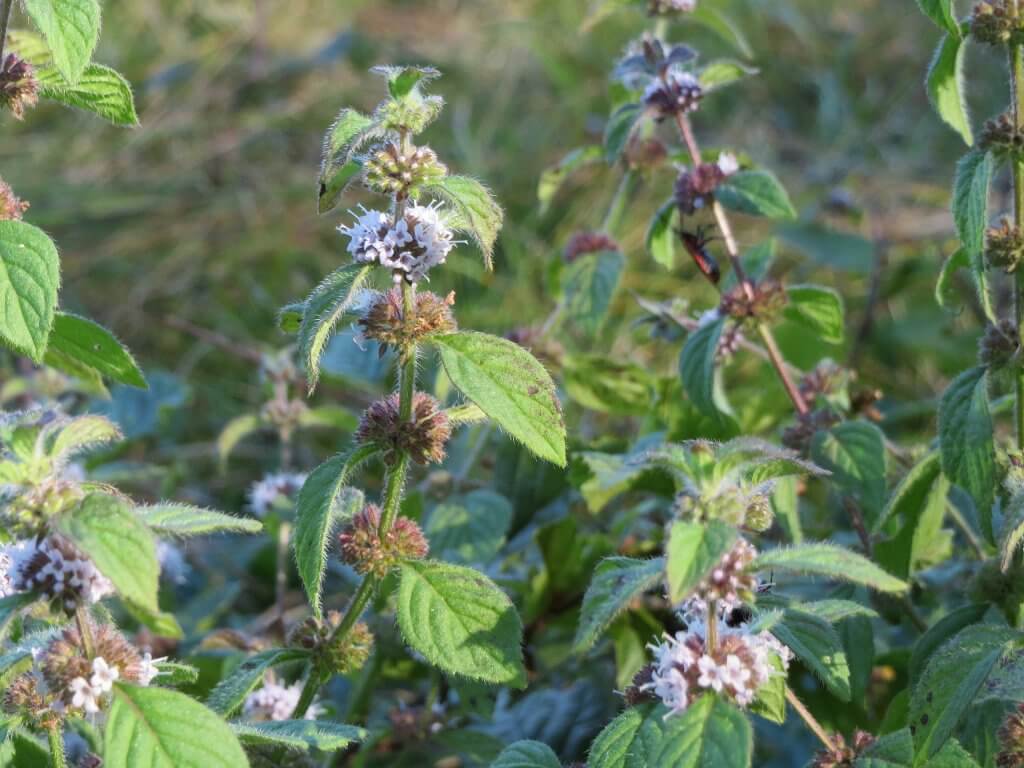Wild mint (Mentha spp.), belongs to a genus of heavily fragrant and aromatic plants. The Mentha genus is the eponymous member of the mint family ‘Lamiaceae’. The mint genus contains the classic age old favorite, spearmint or (Mentha spicata). A common choice when browsing for mint seeds in garden centers. However it is no longer the only popular mint to be cultivated or grown at home in the garden. Mint species are often cultivated to form specific hybrids, from pineapple, ginger, to chocolate flavors, mint is a very popular culinary herb.
Wild mints are native to most regions around the world, with different species colonizing certain habitats. Natural hybridization happens frequently when native habitats overlap. Canada mint (Mentha canadensis) and field mint (Mentha arvensis), are two of the most prolific native species that inhabitant North America.

They can generally be found in shaded areas, especially in moist soils, however their wide spreading rhizomes can collect moisture from a wide area. Mint plants usually grow to a height of around 45cm.
Mint leaves and stems are generally hairy but these fine hairs can sometimes be absent. The leaves are elliptic, toothed and deeply veined. The flowers are arranged on spikes, filled with clusters of white, pink or purple petals.
Edible parts and other uses
These tasty leaves can be added into an array of hot and cold drinks and dishes. From homemade Greek yoghurt, mint sauce and smoothies, to pesto and salads. The leaves are also a popular choice of garnish for cocktails and desserts. Mint flowers can also be eaten, but the majority of the mint flavor is found in the leaves.
Thought to have been first used as a culinary herb and medicinal drink by the Romans. Mint tea is still a very popular herbal remedy drink. Even today many people drink it to aid digestion, reduce nausea and to relieve stress and promote sleep.

Mint is cultivated throughout the world for its leaves and also its oils. Peppermint (Mentha piperita) is a mint hybrid that is considered to be the most widely cultivated mint variety. From essential oils used in aromatherapy, to flavoring and scents used in the cosmetics and food industry. Toothpastes, chewing gum, candy and liqueurs are products that frequently use mint oils and menthol.
Cautions
The aroma of mint leaves is usually instantly recognisable so identification is considered safe for a foraging beginner. However even with the safest of wild edibles, careful identification is still important and you must be 100% sure before eating any wild plants.
Foraging
Look for wild mint along rivers, lakes and streams, as well as shaded areas along the edges of forest and woodland. It thrives within these areas, however it can often be found in full sun in some unexpected locations, including your own back yard.
Canada mint is the native species of the US, however many mint species have now become naturalized throughout the states. Luckily each one is full of flavor and perfectly edible, so have fun exploring which varieties you have nearby.
Use the leaves as fresh as possible, as their flavoring will weaken over time. Alternatively if you have an extra foraged supply, you could freeze the leaves whole or chop them and freeze with water in ice cube trays.

Did you know…
The scientific name for mint was inspired by a story from Greek mythology. A nymph called ‘Minthe’ was said to have had an affair with Hades. After discovering the deception, Hades wife Persophone is said to have turned Minthe into a mint plant where she would forever remain situated next to the river Cocytus.
Conclusion
An evident favorite in the culinary world, mint can be foraged in abundance from the wild as well as from the garden. Whilst out on a walk the leaves make a refreshing snack to chew upon, as well as freshening the breath. You may even choose to grow your own plant at home. As a perennial it produces an abundance of leaves throughout spring, summer and the fall. It is also considered a good companion plant for vegetables, as its strong scent may deter insect pests. However mint has the ability to spread quickly, so a container or pot is often the best option.
—————Written by Hannah Sweet
Hannah is a freelance writer and graphic designer from the UK. With a penchant for travelling, photography and all things botanical, she enjoys writing about a wealth of topics and issues, from conservation and slow living, to design and travel. Learn more about her writing and design services at www.sweetmeanders.co
Many of our readers find that subscribing to Eat The Planet is the best way to make sure they don't miss any of our valuable information about wild edibles.
See our privacy policy for more information about ads on this site






